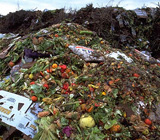
How to feed the predicted world population of nine billion people in 2050 is undoubtedly one of the biggest development challenges facing the world today. While packaging is not a panacea for the global problem of food security, isn’t it about time that the world recognizes the valuable role of protection it has always played? Packaging is a technological wunderkind that makes abundance for the masses possible. By protecting the food we grow, we can make major strides in achieving a more secure global food basket.
In developing countries, the vast majority of food-a figure as high as 50 percent-is lost post-harvest before it even reaches the consumer. According to a recentreportcommissioned by the UN Food and Agriculture Organization, this adds up globally to 2.3 billion tons of food a year wasted or lost.
To put this figure in perspective, in 2008, the world gave 6.3 million tonnes of food to aid those in need. One must question the point of devoting so much effort to produce more food, if that food rots or is thrown away? Why put millions more acres under the plough just to waste the resulting crop?
Olivier De Schutter, UN Special Rapporteur on the Right to Food, recently wrote that, “eliminating hunger does not just depend on the world’s ability to produce enough food. For many communities, the solutions lie in making better use of the food already produced.”
To achieve this, the private sector (the packaging industry, farmers and food processors) should join forces with the public sector (policy makers and aid agencies) to develop an innovative partnership to help build packaging infrastructure in developing countries to reduce the amount of food wasted post-harvest, at market, and among consumers.
Better handling and packaging from farm to consumer, extended-shelf-life packaging, and smart packages can, together, generate as much spare food for human consumption as is produced every year by an agricultural powerhouse like the United States or the European Union. It is possible to feed billions of humans, and to do so well, with existing technologies - provided we apply them everywhere.
All this suggests that some of the development aid now being spent on food be instead spent on helping poor countries develop their packaging infrastructure. Exploring the formation of a public-private partnership between aid agencies and the packaging industry to deliver help in building that infrastructure would be a first step towards a win-win scenario for both parties.
Buying packaging instead of food may sound callous to some, but packaging stands in the same relation to food security as the sewerage system stands to health. Proper sewerage has done more to extend life expectancy than all the miracles of modern medicine. Likewise, decent packaging is likely to generate more available food than the miracles of biotechnology. We cannot afford not to use it.
Julian Carroll is managing director of the European Organization for Packaging and the Environment (EUROPEN).
